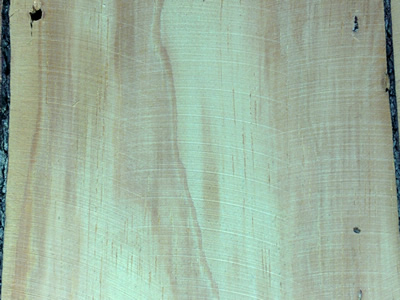
by Everett 2/23/2017
When I first learned how to edge I would work towards making sure that all the scratches made by the edger were 90 degrees to the wood grain. 90 degree scratches are the hardest to take out with the buffer or random orbit sander, and it gets gradually easier and easier the closer the scratches get to parallel with the grain of the boards. Many years ago at a seminar, a couple of guys were giving a demonstration on edging and the first thing they did was run the edger across the grain (I guess to even out overwood). Then they proceeded to do a traditional edger pass that I was used to seeing, moving the machine with the grain.
This is the counter intuitive thing about the edger, your instinct is to move the machine with the grain, as that's how you typically use every machine when sanding wood. But the way the machine makes contact with the floor leaves the exact opposite scratch pattern that you want. After seeing that demonstration it hit me- just do what I've been doing for years but pretend the boards run the other direction. As stated before, if I make sure the scratches are 90 degrees to the wood, all I have to do is turn myself 90 degrees and literally move the machine accross the grain, like magic all my scratches will be going with the grain.
Of course there are times when this is impossible. Just by simple limitations in the design of the machine you can't do this right by the wall on butt ends. The compromise there is you just do your best and end up with 45 degree scratches in those cases. Hey, it's better than 90 degrees.
Setup and Clocking
My preference for edger setup is for the arc to start making contact at 12:00. There are other factors that affect the scratch pattern left by the edger, such as undulations in the floor, or edger pad wear, among others, but lets just pretend that the floor is perfectly flat for now. If the edger is setup to leave scratches starting at 12:00 then you simply start with the machine 90 degrees to the grain and move forward and backward advancing about one inch each pass. By the nature of the edger the scratches will have a slight arc to them but it's about as with the grain as you can get a 7" round disc to cut.
When you get into real world situations where you're dealing with uneven floors with dips and peaks and other various undulations, you need to "read" the floor. If your scratches are arced too far to the left, then you need to physically clock the whole machine further to the right to account for it. Same for the opposite effect, sometimes if the floor is higher on the right then the scratches will appear to be arced too far on the right side and you need to clock the machine to the left.
This video can probably explain it better than I can in text:


